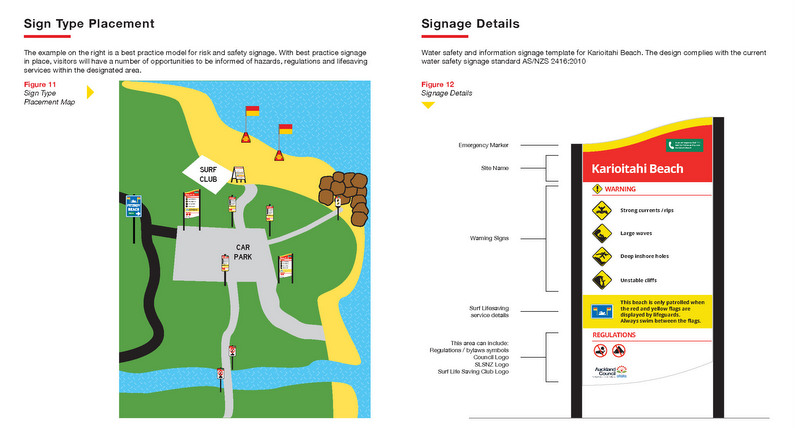
Coastal Safety Signage and Public Rescue Equipment guidelines
“Surf lifeguards have known for a long time about the unpatrolled spots where members of the public get into trouble,” says Dr Mick Kearney, National Coastal Safety Manager for Surf Life Saving New Zealand (SLSNZ).
“Our organisation has been trying to address this challenge for years. We’ve been advocating for local government to install proper coastal safety signage, and provide quality public rescue equipment, but it's only recently that we’ve gained some traction on this mission.”
SLSNZ employed Dr Kearney to drive this initiative forward, as part of its vision that no-one drowns on Aotearoa's beaches. “We carefully analysed data and research from around the world, to understand what approach would work best in New Zealand,” he says. Research showed that 100 percent of people in New Zealand who drowned during a rescue attempt in the last decade had no flotation device.
Traditional attitudes were that members of the public shouldn’t go in the water to attempt a rescue. Recent research has helped that change to “if you go, take flotation.” New Zealand trials confirmed that the best options for public rescue equipment were a hard plastic rescue buoy for beach locations, and a flotation ring for headland, jetty and wharf locations.
All the research, data analysis and trials helped a joint team from SLSNZ and Drowning Prevention Auckland to produce ‘A Guide to Public Rescue Equipment for the New Zealand Coast’. Dr Kearney also produced a “A Guide to Beach Safety Signs in New Zealand” based on the AS/NZS 2416:2010 Water safety signs and beach safety flags – Specifications for water safety signs used in workplaces and public areas. Like the Public Rescue Equipment Guidelines, these signage guidelines were endorsed by the NZSAR Consultative Committee earlier this year.
Dr Kearney also contributes his expertise to Coronial investigations. Recently, two preventable drowning incidents in Mount Maunganui prompted the Coroner to recommend that all councils work with SLSNZ to conduct coastal safety assessments, and install standardised signage and public rescue equipment."Now when we advocate with local government, we have a clear set of guidelines based on international best practice that is endorsed by the entire search and rescue sector and supported by numerous Coroners recommendations," says Dr Kearney. "Together, these form a compelling argument, which was only possible thanks to excellent collaboration across the sector, and funding from NZSAR. We're delighted to see that some councils are beginning to respond."
SurfCom now assists the coordination of all SLSNZ operations.
For around 20 years, SLSNZ’s communication centre (SurfCom) has been operating in the Auckland Marine Rescue Centre supporting Surf Life Saving Northern Region operations. Thanks to recent government investment in back-end hardware and IT systems, SurfCom now assists the coordination of all urgent SLSNZ operations across the entire country.
"At a local level, agencies such as Police or RCCNZ used to contact our clubs and teams directly,” says Allan Mundy, National Search and Rescue Manager for SLSNZ. “Now SurfCom is staffed and available 24/7 and those agencies can call SurfCom directly to activate a response from SLSNZ. Agency representatives should contact surfcom@surflifesaving.org.nz for the direct phone number. Members of the public who require urgent help still dial 111 and ask for Police.”
The two guides referred to in this article are available from the Standards NZ website.
"Guide to Public Rescue Equipment for the New Zealand Coast"
"A Guide to Beach Safety Signs in New Zealand"
This story was originally published in the December 2023 issue of Link magazine.
Feature image: An excerpt from "A Guide to Beach Safety Signs in New Zealand"
